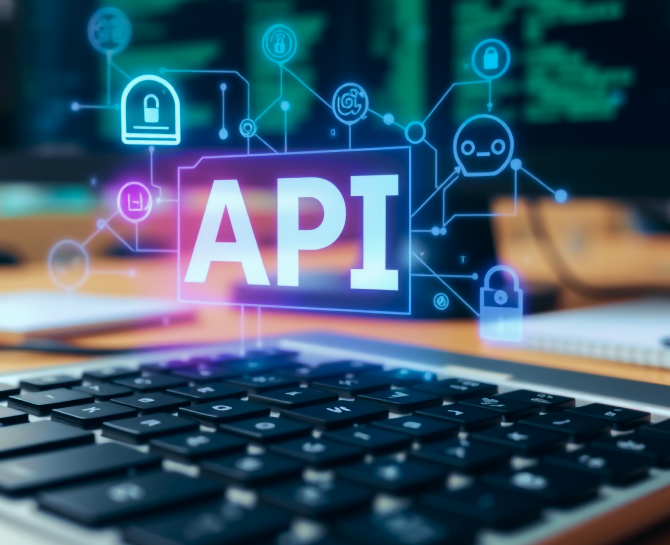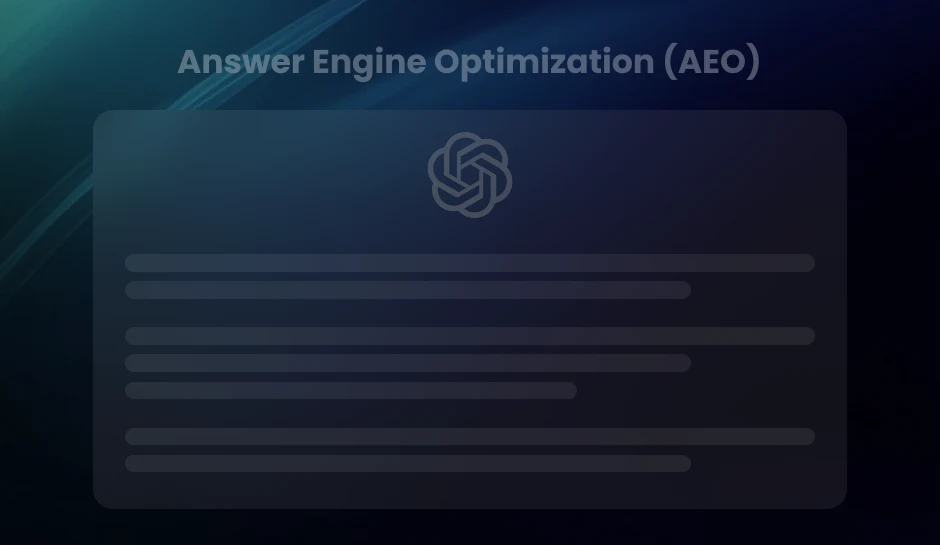
How the Attribution Reporting API is Rewriting Digital Ad ROI Models
Advertising measurement is shifting toward privacy-compliant models. The Attribution Reporting API gives brands a way to analyze ROI without compromising data ethics, offering structured, API-driven reporting for decision-making.
Accurate ROI modeling has always been a moving target. But today, it’s not just shifting, it’s being redefined. As third-party cookies phase out and privacy regulations tighten, marketers are losing access to the user-level data that once powered attribution models. Into this vacuum steps the Attribution Reporting API, Google’s answer to the privacy-performance paradox.
This isn’t just another technical tool. It represents a fundamental shift in how performance is measured, reported, and optimized. The Attribution Reporting API doesn’t aim to recreate old tracking systems, it’s building a new framework for evaluating ad effectiveness in a world where user identity is increasingly off-limits.
In this post, we’ll unpack how this API is disrupting traditional ROI models, what that means for ad spend visibility, and how early adopters are gaining an edge by adapting their attribution logic, not fighting it.
What is the Attribution Reporting API — And Why It’s a Game Changer
The Attribution Reporting API is a new framework developed by Google as part of its broader Privacy Sandbox initiative, which aims to create web technologies that protect user privacy while still enabling essential use cases—like ad measurement and personalization.
Specifically, the Attribution Reporting API is designed to replace traditional tracking and measurement mechanisms that rely on third-party cookies, which are being phased out across major browsers due to growing privacy concerns. This API enables advertisers and publishers to measure the effectiveness of their ads—such as conversions or installs—without exposing users to cross-site tracking.
What Problems Does It Solve?
- Loss of Third-Party Cookies:
- Data Leakage:
- Signal Integrity:
As browsers deprecate third-party cookies, traditional attribution methods break down. The Attribution Reporting API fills this gap with a privacy-preserving alternative that doesn’t rely on invasive tracking.
In legacy systems, sensitive data could inadvertently leak between sites, exposing users to unwanted surveillance. This API enforces strict data boundaries, minimizing the potential for leakage.
Marketers need reliable signals to optimize campaigns. By offering secure, aggregated reporting, the API maintains signal integrity without compromising user privacy.
Key Distinctions from Legacy Attribution Models
- Privacy by Design:
- Split-Functionality:
- No Cross-Site Identifiers:
Unlike traditional models that use third-party cookies or fingerprinting, the Attribution Reporting API is built with privacy at its core. It limits data granularity and enforces delays and noise in reporting to prevent user re-identification.
Attribution is broken into two separate roles, event-level (used to attribute conversions to clicks or views) and aggregated reports (used for performance measurement). This dual structure makes it harder to track individual users while still giving marketers useful insights.
There are no persistent identifiers shared across sites, making it nearly impossible to track individuals from one context to another.
Two Reporting Models: Event-Level vs. Aggregate-Level
The Attribution Reporting API introduces two complementary reporting models: event-level and aggregate-level. These models provide advertisers with essential insights while ensuring user privacy and aligning with Google’s Privacy Sandbox framework. Understanding both models is crucial for making effective data-driven decisions in a post-cookie world.
Event-Level Reporting
Event-level reporting focuses on capturing individual user interactions, linking specific ad engagements (such as clicks or views) to particular conversion events. This model allows for granular attribution, often measuring short-term actions like a click-to-conversion process.
Key Features
- Direct Attribution:
- Delayed Reporting:
- Noise Injection:
- Limited Metadata:
Event-level reports provide a one-to-one relationship between an ad interaction and a conversion event, such as tracking when a click results in a sale or an app install.
Data is typically delayed by 24 to 48 hours to prevent real-time user tracking and ensure privacy.
The data is intentionally obfuscated to prevent identifying individual users or creating user profiles.
Only essential campaign metadata, such as campaign ID or ad group ID, is provided, ensuring that no personally identifiable information is used.
Use Cases
- Tracking click-to-conversion journeys, providing insights into how users engage with an ad and complete the conversion process.
- Measuring micro-conversions, like form submissions, sign-ups, or other small actions leading to larger conversions.
- Optimizing bidding strategies based on detailed user interactions, enabling more precise adjustments in real-time.
Aggregate-Level Reporting
Aggregate-level reporting, in contrast, focuses on providing summary-level data across large groups of users. Instead of tracking individual conversions, it compiles data into broad metrics, such as total conversions, return on ad spend (ROAS), or cost-per-acquisition (CPA), across many users.
Key Features
- Privacy-Preserving Aggregation:
- Flexible Breakdown:
- No User-Level Data:
- Custom Event Binning:
Data is aggregated in ways that protect individual privacy, using techniques like multi-party computation or differential privacy.
Reports can provide insights based on high-level metrics, such as ad creative performance, device types, regions, or audience segments.
Aggregate reports contain no personally identifiable information or individual tracking, ensuring complete privacy protection.
Conversion values can be categorized into buckets (e.g., low, medium, high-value conversions), allowing for more strategic insights.
Use Cases
- Assessing overall campaign performance at scale, such as understanding the impact of different channels or creatives on conversions.
- Media mix modeling and budget allocation decisions, where high-level performance data informs investment across different advertising channels.
- Long-term trend analysis, enabling a broader understanding of how campaigns are performing over extended periods.
Why the Dual-Model Structure Matters
The combination of event-level and aggregate-level reporting offers a comprehensive view of campaign performance, balancing the need for both granular data and strategic insights. These two models complement each other, enabling a nuanced approach to digital marketing.
- Event-Level Reporting allows for detailed analysis of individual user interactions, making it perfect for optimizing campaigns on a tactical level. It helps marketers identify exactly how users are engaging with ads and whether specific actions lead to conversions.
- Aggregate-Level Reporting offers a broader perspective, enabling advertisers to assess overall campaign effectiveness and plan for future marketing efforts. This helps inform decisions related to budget allocation, audience segmentation, and performance trends over time.
Together, these two models allow marketers to:
- Act quickly and precisely based on detailed insights (event-level).
- Make informed, strategic decisions based on aggregated data and long-term trends (aggregate-level).
How the Attribution Reporting API Impacts Ad Budgeting and ROI Visibility
The Attribution Reporting API shifts digital marketing from deterministic, user-level tracking to a probabilistic, privacy-preserving model. This transformation impacts how companies measure ROI, forecast performance, and allocate ad budgets.
Legacy attribution relied on tracking exact user journeys through third-party cookies. The new model replaces that with aggregated and anonymized signals, meaning marketers now work with inferred, rather than directly observed, conversion paths. Data is delayed, sampled, and stripped of identifiers, emphasizing cohort-level insights over individual behavior.
Implications for ROAS Forecasting and Optimization
- ROAS Forecasting:
- Campaign Optimization:
- Performance Audits:
Forecasting becomes more dependent on modeled data and historical trends. Delayed reporting and noise mean marketers must build tolerance for uncertainty and adjust their expectations around precision.
Tactical adjustments now depend on event-level signals with limited metadata. While this supports basic optimization (e.g. which creatives or channels perform better), it requires more emphasis on statistical patterns and A/B testing rather than user-level behavior.
Advertisers can no longer run detailed multi-touch attribution audits. Instead, they’re adopting hybrid measurement models, combining first-party data with API signals to validate performance across channels.
How Smart Companies Are Restructuring Their Data Pipelines
Leading advertisers and platforms aren’t just adjusting reporting tactics—they are rebuilding their measurement infrastructure to work natively with privacy-safe APIs.
Some key adaptations include:
- Integrating Attribution Reporting API data into modern data warehouses alongside first-party CRM and site analytics data.
- Developing custom attribution models that blend event-level and aggregate-level inputs, using machine learning to fill gaps created by privacy constraints.
- Reconfiguring data ingestion pipelines to handle delays, deduplications, and conversion filtering based on the new API’s logic.
- Redefining KPIs and benchmarks, accepting that some metrics—like exact user paths or multi-touch attribution—may no longer be available, and replacing them with modeled equivalents.
Pro Tip – Forward-thinking organizations are treating this not as a limitation but as a catalyst for cleaner, more ethical data practices. They’re investing in analytics frameworks that prioritize user trust while still delivering actionable insights for marketing and finance teams. This evolution signals the beginning of a new era in digital advertising—one where privacy and performance are not mutually exclusive, but tightly integrated in the architecture of how decisions are made.
API Limitations That Actually Reshape Strategy
The Attribution Reporting API isn’t just a privacy-preserving alternative to legacy tracking—it fundamentally changes how marketers measure performance and define success. What might appear as technical constraints are, in reality, signals that the industry must reframe its strategic approach to ROI.
Delayed Reporting Requires Patience and Planning
The API introduces built-in delays—typically 24 to 48 hours—for both event-level and aggregate-level data. This prevents real-time optimization and requires marketing teams to shift from same-day performance reviews to retrospective analysis.
Planning cycles must adjust accordingly, with decision-making based on patterns over time rather than immediate signals. Marketers who rely heavily on real-time dashboards will need to rethink their reporting infrastructure and cadence.
Loss of User-Level Paths Breaks Traditional Attribution Models
With no access to cross-site user identifiers or full conversion paths, advertisers can no longer attribute value to individual touchpoints. This effectively deprecates multi-touch attribution as it has traditionally been used.
Instead, value must be inferred from aggregate data and probabilistic signals. This pushes organizations to adopt methods like geo-based lift studies, cohort analysis, or synthetic control groups to evaluate impact—tools that focus on what changed when a campaign ran, not who converted.
Aggregated Data Changes How We Measure Performance
Aggregated reporting strips out granular conversion details in favor of summary metrics, such as total conversions per campaign or value ranges. This forces a shift from micro-level optimization (e.g., adjusting bids based on individual user behavior) to macro-level adjustments driven by broader trends.
Performance analysis now focuses on campaign segments, creative types, or geographic clusters rather than individual journeys. KPIs must evolve to reflect this new data structure.
Aligning Internal KPIs With Privacy-Centric Measurement
Legacy KPIs—like cost per individual conversion or conversion rate by user journey stage—don’t translate in a privacy-safe environment. Teams need to redefine success around what is measurable: modeled conversions, aggregated ROAS, and channel-level efficiency.
Reporting should emphasize directional accuracy and statistical confidence over exact numbers. This shift requires tighter coordination between marketing, analytics, and finance, ensuring that performance benchmarks are grounded in what the API can realistically deliver.
Real-World Shifts: Brand Optimizing Budget Reallocation Based on API-Based Attribution
A leading e-commerce brand partnered with DiGGrowth to improve its advertising ROI amidst a landscape of increasing privacy challenges. With the loss of third-party cookies, the brand struggled to track the effectiveness of its ad spend across multiple platforms.
DiGGrowth implemented the Attribution Reporting API to help the brand continue to evaluate the true performance of its campaigns. By using event-level and aggregate-level reports, the brand gained insights into which channels and creatives were delivering the highest return, even without full user-level data.
Through this privacy-first attribution model, the brand was able to:
- Shift Budget Allocation:
- Optimize Channel Mix:
- Enhance Campaign Efficiency:
They redirected budget from underperforming campaigns to high-performing ones with more proven results, as indicated by the API-based conversion data.
By understanding how different channels interacted, the brand adjusted its media mix for better synergy and increased ROI.
The brand was able to scale successful campaigns while minimizing waste, using the attribution model to guide smarter spending decisions.
The Attribution Reporting API helped the brand maintain strategic control over its advertising efforts, all while adhering to privacy standards. The shift in their ROI model was not just about optimizing ad spend, but also about gaining deeper, more reliable insights into the customer journey. By leveraging this API, the company gained a competitive edge in a rapidly changing digital landscape.
What’s Next: Preparing for a Broader Ecosystem Shift
The Attribution Reporting API is part of a larger ecosystem shift. As Google leads with the Privacy Sandbox, other platforms and ad tech players are adapting their own approaches—reshaping how cross-channel attribution will work across the board.
Platform Responses: Meta, TikTok, and Others
Major platforms like Meta and TikTok are moving toward similar privacy-preserving models. Meta has invested in aggregated event measurement and conversion modeling through its own privacy-safe APIs. TikTok is focusing on modeled conversions and encouraging advertisers to use server-side tracking. The common thread: deterministic, cross-site tracking is being phased out across the industry. Advertisers need a unified measurement strategy that works without third-party identifiers—regardless of platform.
Sandboxed APIs and the Future of Attribution
Google’s Privacy Sandbox introduces APIs like Attribution Reporting, Protected Audience, and Topics, all of which are designed to enable key advertising use cases without exposing user-level data. As these APIs mature, they will influence not just Google’s ecosystem but also how attribution is handled across channels and devices. Expect a gradual shift toward cohort-based insights, modeled conversions, and privacy-compliant retargeting, making legacy attribution systems increasingly obsolete.
What to Watch: Signals from Google
Executives should closely monitor a few key signals: the pace of third-party cookie deprecation in Chrome, updates to Privacy Sandbox API specifications, and partner adoption among DSPs, analytics platforms, and measurement tools. Google’s timeline has already started rolling out in stages, and by 2025, these APIs will likely become standard infrastructure. Staying ahead of these shifts will be critical for sustaining attribution accuracy, budget efficiency, and long-term marketing performance.
Key Takeaways
- The Attribution Reporting API redefines how ad effectiveness is measured by providing a privacy-first alternative to traditional tracking methods.
- The API introduces two reporting models: event-level for granular conversion analysis and aggregate-level for broader campaign performance insights.
- Early adopters like DiGGrowth help brands optimize budget allocation and enhance ROI by using API-based attribution to guide strategic decisions.
- This API supports a shift towards privacy-compliant, probabilistic attribution, offering flexibility for both short-term optimizations and long-term strategic planning.
Conclusion
The Attribution Reporting API represents a pivotal shift in how advertisers can measure and optimize campaign performance in a privacy-conscious world. As traditional tracking methods are phased out, the API offers a robust solution that balances privacy with actionable insights. By leveraging event-level and aggregate-level reporting, brands can continue to refine their ROI models and make smarter, data-driven decisions.
As the industry moves toward privacy-first solutions, early adoption of the Attribution Reporting API is not just an advantage but a necessity. Companies that adapt to this new way of measuring ad effectiveness will be better equipped to thrive in an increasingly privacy-regulated environment.
For those looking to navigate these changes and unlock the full potential of privacy-compliant attribution, DiGGrowth offers the expertise and tools needed to transform your data into actionable insights.
Are you ready to redefine your marketing strategy and embrace privacy-first attribution?
Contact us at info@diggrowth.com to learn more about how the Attribution Reporting API can help optimize your ROI and streamline your ad performance in this new digital landscape.
Ready to get started?
Increase your marketing ROI by 30% with custom dashboards & reports that present a clear picture of marketing effectiveness
Start Free Trial
Experience Premium Marketing Analytics At Budget-Friendly Pricing.

Learn how you can accurately measure return on marketing investment.
Additional Resources
Don’t Let AI Break Your Brand: What Every CMO Should Know
AI isn’t just another marketing tool. It’s changing...
Read full post postFrom Demos to Deployment: Why MCP Is the Foundation of Agentic AI
A quiet revolution is unfolding in AI. And...
Read full post postAnswer Engine Optimization (AEO): The New Frontier of SEO in 2025
As digital experiences continue to evolve, so does...
Read full post postFAQ's
The Attribution Reporting API aggregates data across devices using cohort-level insights. It does not track individual users, but rather focuses on understanding overall trends and conversions within privacy-compliant boundaries, ensuring accurate performance measurement across devices.
It supplements traditional reporting by providing privacy-preserving, aggregated data, allowing businesses to enrich their existing insights while maintaining compliance with privacy standards.
No, the Attribution Reporting API introduces a delay in reporting, typically between 24 to 48 hours. This delay ensures user privacy, preventing real-time optimization and encouraging marketers to focus on long-term trends rather than immediate signals.
The Attribution Reporting API supports retargeting by providing aggregated conversion data while maintaining privacy. Marketers can still create effective retargeting strategies based on cohort-level insights and aggregated behaviors, ensuring compliance with privacy regulations.
The API provides key metrics such as total conversions, return on ad spend (ROAS), cost-per-acquisition (CPA), and more. However, it limits individual-level details and focuses on aggregated insights to ensure privacy and statistical accuracy.


